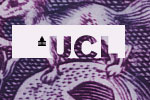

 |
 |
IntroductionWelcome. This study-pack is for students interested in Dutch attempts throughout the centuries to define their collective identity by looking at their ancestors, the Batavians. It can be used as a self-study pack, or as part of a Dutch studies course.
The Roman historian Tacitus, in his studies of inhabitants of the Roman Empire, lavishly praised the Batavians for their courage and their love of freedom. His text, from the late Middle Ages onwards, formed the cornerstone of the so-called Batavian myth. Versions of the myth, often fictional rather than factual, were presented to generations of Netherlanders and Dutchmen in various ways. The Batavian myth enjoyed the attention, first in the Dutch Republic and after 1813 in The Netherlands, of artists, poets, and politicians, particularly in periods of political uncertainty,. The self-study pack is presented here in chronological order. Starting with the relevant passages from Tacitus’ historical works, the pack then discusses a number of well-known advocates of the Batavian myth, such as Erasmus of Rotterdam and Hugo Grotius. Traces of their interpretations, as well as new methods of using the myth in the 19th and 20th centuries will also be discussed. The navigation bar on the left-hand side of the screen allows you to go to the various sections of the study-pack. Alternatively, you can follow the links as they appear on the pages, starting with the fragments of >Tacitus’ works. In the quiz you will be able to check your understanding of the material presented here, while the bibliography will point you to other websites and to literature for further reading. Good luck and enjoy the ‘Batavian myth’ study-pack. |